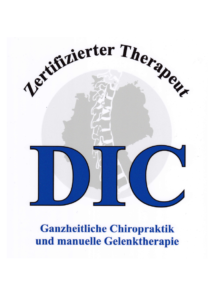Chiropractic
“Structure governs Function” (Barrie Savory, Osteopath)
The history of chiropractic began early in antiquity and the Middle Ages under Hippocrates and Galen. The admittedly at that time still very crude and just “antiquated” methods have changed over the centuries again and again under new aspects and improved goal-oriented. The fact that the techniques and the knowledge about them were never lost and lasted until the method was more clearly defined in 1895 by D.D. Palmer is surely an expression of how much relief and the desire for the “crack” is felt by a large part of the people plagued by tension and malpositions.
Today, the practice of chiropractic in Germany, especially on the spine, is allowed to doctors and alternative practitioners and only with appropriate qualification and the necessary knowledge in theory and practice allowed and responsible.

What, among other things, leads to malpositions?
If you consider the body as a self-regulating and healing organism, the nervous system, which controls and regulates all organs and tissues, is right at the top, along with the arterial supply. This system can be impaired when partial displacements (subluxations) of a joint from the entire axis restrict movement and displace the spaces around the joint, and thus nerves and vessels.
If there are several subluxations, a malposition is noticeable and one speaks of a “blockage”. The body can no longer get out of the misalignment on its own.
A mechanical position correction, chiropractic, can provide relief.
How does chiropractic work?
The overload and irritation around the misalignment, creates a vicious cycle of defensive tension and sympathetic tone that perpetuates the discomfort and forces tissue hardening and functional restriction. A manipulative stimulus created by the chiropractic grip and impulse then can provides:
-Pain relief (inhibition at the spinal cord level).
-Lowering of sympathetic tone (stress response)
-lowering of muscle tone
-formation of endorphins
The spiral of pain and tension can thus be broken, and the joint can be better supplied by the nerve and vessels under the decreasing pressure and tension.
Where does the “cracking sound” come from?
Although the popular vernacular may best imagine what is meant by the word “setting,” the “pop” of a joint certainly does not come from the bones popping out and in or rubbing together. Rather, it is the “pop” of a vacuum-associated sound when two smooth surfaces, with a touch of fluid and negative pressure between them, separate. This can be seen nicely in the MRI video below.
-at the moment only on the german site installed-
Translated with www.DeepL.com/Translator (free version) … Amazing Tool !!!
contact details
Address
Am Säumarkt 11
74523 Schwäbisch Hall
Phone
0049791 – 946 89 44
E-mail & website
This post is also available in: German

